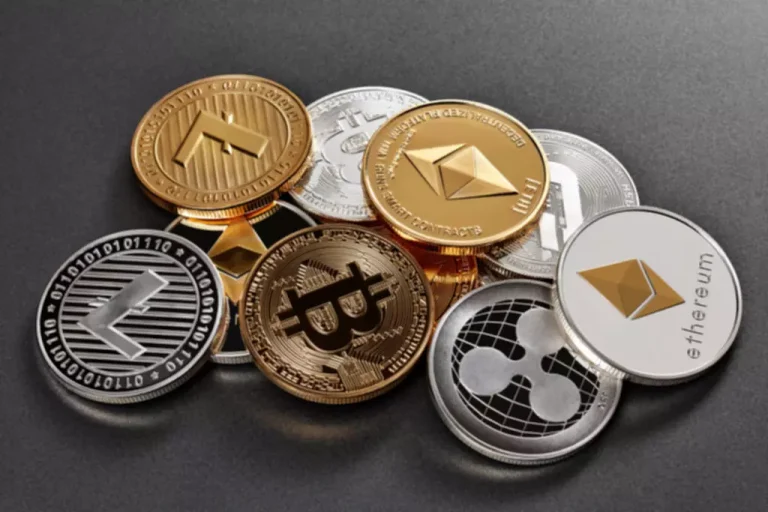Content
Commission free ETFs might be free to buy and sell but they are not free to own. Stock brokers earn fees on these funds by charging the fund manager, and the fund manager adds that fee to etp vs etf the annual fee they charge investors. Most index funds and a small group of actively managed funds don’t charge a load. No-load index funds are the most cost efficient mutual funds to buy because they have smaller operating costs.

ETFs vs. mutual funds: Cost comparison
The invisible costs that come with buying and selling ETFs relate Fintech to the price you pay or receive. The actual value of an ETF is its Net Asset Value, but you will trade at either the bid or offer price. If you buy at a price higher than the NAV, that’s an invisible cost that you are in effect paying.
- These are widely recognized financial instruments designed to offer investors an easy and efficient means of gaining diversified exposure to entire indexes or market segments through a single trade.
- If you ultimately end up trading at a higher price, that is slippage which is another hidden cost.
- His key responsibilities include leading growth in BMO ETFs’ business, raising product awareness, and delivering a world-class experience to investment advisors and portfolio managers.
- Still can’t choose between ETF and mutual fund, Click here to clear the doubt.
- These are levied on both, ETFs and Mutual Funds but form a very small part of the overall fee.
Etp Expenses: Analyzing The Costs Related To Trade Traded Merchandise
During his career he has authored several investment industry courses for the Canadian Securities Institute (CSI), including ETF focused courses and Managed Accounts chapter of the CSC. Kevin frequently interacts with portfolio managers and investors about the benefits of ETFs and how they can be used to add value to any investment portfolio. This interaction builds on his institutional background in Managed Account platforms. He is a regular contributor to investment industry publications, has also https://www.xcritical.com/ been a guest speaker and panelist at industry events, and has appeared several times on BNN.
Government’s Decision on Public Provident Fund Rates Explained
This process can drive management fees and charges down as providers compete for business. One benefit of ETFs is that you can trade them like any other asset you buy or sell on an exchange, such as a stock or a bond. But as with those assets, investors may be charged a commission when buying and selling ETFs. Though less popular, there are also actively managed ETFs, where a portfolio manager or group of analysts make decisions about what securities to buy and sell within the fund. Generally, these active funds will charge a higher fee than index ETFs, which are simply designed to track an index or segment of the market.
We’ll unravel these terms with clear-cut explanations and compare how they stack up for ETFs versus mutual funds. By the end of this read, you’ll grasp the ins and outs of investment fees, ensuring your money works as hard for you as you did for it. So stick around; let’s dive into the nitty-gritty of fund fees and set the stage for smarter investing choices. MER, also recognized as the expense ratio, is the annual charge that each one funds cost shareholders for holding the fund. Expressed as a share of belongings underneath management (AUM), it captures the management payment, operating bills and taxes incurred by a fund on an annual foundation. Operating bills can cowl gadgets such as fund valuation costs, audit and legal charges and prices related to prospectuses and annual reports.
He holds an MBA from the Schulich School of Business at York University and a Bachelor of Engineering degree (Aerospace Engineering) from Toronto Metropolitan University. The views and strategies described in our content may not be suitable for all investors. Because market and economic conditions are subject to rapid change, all comments, opinions, and analyses contained within our content are rendered as of the date of the posting and may change without notice. The material is not intended as a complete analysis of every material fact regarding any country, region, market, industry, investment, or strategy.
The overall set of fees for an ETF is known as the expense ratio or the ETF expense ratio. Some of the largest ETFs, reflect large swaths of the market as a whole, similar to index mutual funds (though there are some differences between index mutual funds and ETFs). Danielle Neziol speaks with, Kornel Szrejber the host of the Build Wealth Canada Show (A top personal finance and investing podcast for Canadians).

ETFs are subject to market fluctuation and the risks of their underlying investments. In addition to paying the portfolio manager’s salary, the management fee covers the cost of the investment manager’s staff, research, technical equipment, computers, and travel expenses to send analysts to meet corporate management. While fees vary, the average equity mutual fund management fee is about 1.10%.
For ETP providers, managing tracking error is crucial to attract and retain investors. Minimizing tracking error helps to build investor confidence in the ETP’s ability to replicate the benchmark index accurately. Providers employ various strategies to reduce tracking error, including optimizing the portfolio composition, employing sophisticated trading techniques, and implementing robust risk management systems. By delivering consistent tracking performance, ETP providers can differentiate themselves in a competitive market. The impact of expense ratios becomes more pronounced in the context of long-term investing.
Analyze management fees, which compensate the portfolio managers responsible for making investment decisions within the fund. Higher fees suggest active management with potentially higher returns but also increased risk and variability in performance relative to the benchmark index. ETF fees can be relatively low compared to mutual funds, but as with any investment fees, it’s good to know the potential costs upfront.
An expense ratio is a measure of the cost of owning an ETP, expressed as a percentage of the fund’s total assets. It includes various expenses such as management fees, administrative costs, legal fees, and other operational expenses. The expense ratio is deducted from the fund’s assets, reducing the net asset value (NAV) and, consequently, the returns received by investors. Beyond the advertised expense ratio, both ETFs and mutual funds may have additional costs like transaction fees, bid-ask spreads for ETFs, and potential taxes on capital gains distributions for both investment types. The unique structure of ETFs allows investors to buy and sell shares without triggering capital gains taxes, as these transactions typically don’t require the fund to sell securities.
Some managers will publish their target ER, but actually charge higher fees if the total assets in the fund are lower than a specific level. Check the small print if you are investing in ETFs with less than $50 million under management. Some mutual funds—including many no-load and index funds—charge investors a special, annual marketing fee called a 12b-1 fee, named after a section of the 1940 Investment Company Act. The 12b-1 fee is broken out in the prospectus as part of the expense ratio. It can run as high as 0.25% in a front-end load fund and as high as 1% in a back-end load fund.
Passive investing using ETFs is taking the world by storm, and it is by far, one of the easiest ways to invest in the stock market. Danielle Neziol sits down with Julien Brault, founder of Hard Bacon, to provide an update on Inflation and discuss how ETFs can help hedge portfolios against some of the risks involved with rising inflation. In 2019, he realized how little financial education was talked about (especially among young adults) and decided to share that passion with the world. John joined BMO Wealth Management in 2007, following 13 years at international accounting firm PricewaterhouseCoopers, where he led a team of tax professionals in the High Net Worth Planning Group in downtown Toronto. He is experienced in a broad range of tax and estate planning issues, including personal, corporate, trusts, partnerships, international and cross border, and not-for-profit taxation.
• Management fees and expense ratios are expressed as a percentage of the fund’s net asset value, helping investors understand annual costs. • Exchange-traded funds (ETFs) generally have lower fees than mutual funds due to their passive management and reduced trading costs. As we can see, ETP A has a lower management fee and expense ratio than ETP B, and therefore delivers a higher net return and value to the investors. The difference may seem small in the short term, but it can compound over the long term and make a significant difference in the wealth accumulation of the investors. For example, if we extend the time horizon to 10 years, the value of ETP A will be $253.4 million, and the value of a $10,000 investment in ETP A will be $25,340.
While lower expense ratios may seem appealing, it is crucial to consider the fund’s investment strategy and track record. A fund that charges higher fees but consistently outperforms its benchmark may still provide better net returns compared to a low-cost fund that lags behind. Therefore, investors should evaluate expense ratios in conjunction with other factors like historical performance and risk management. You’re not alone if you’ve ever scratched your head wondering about management fees, operating costs, or brokerage commissions.
